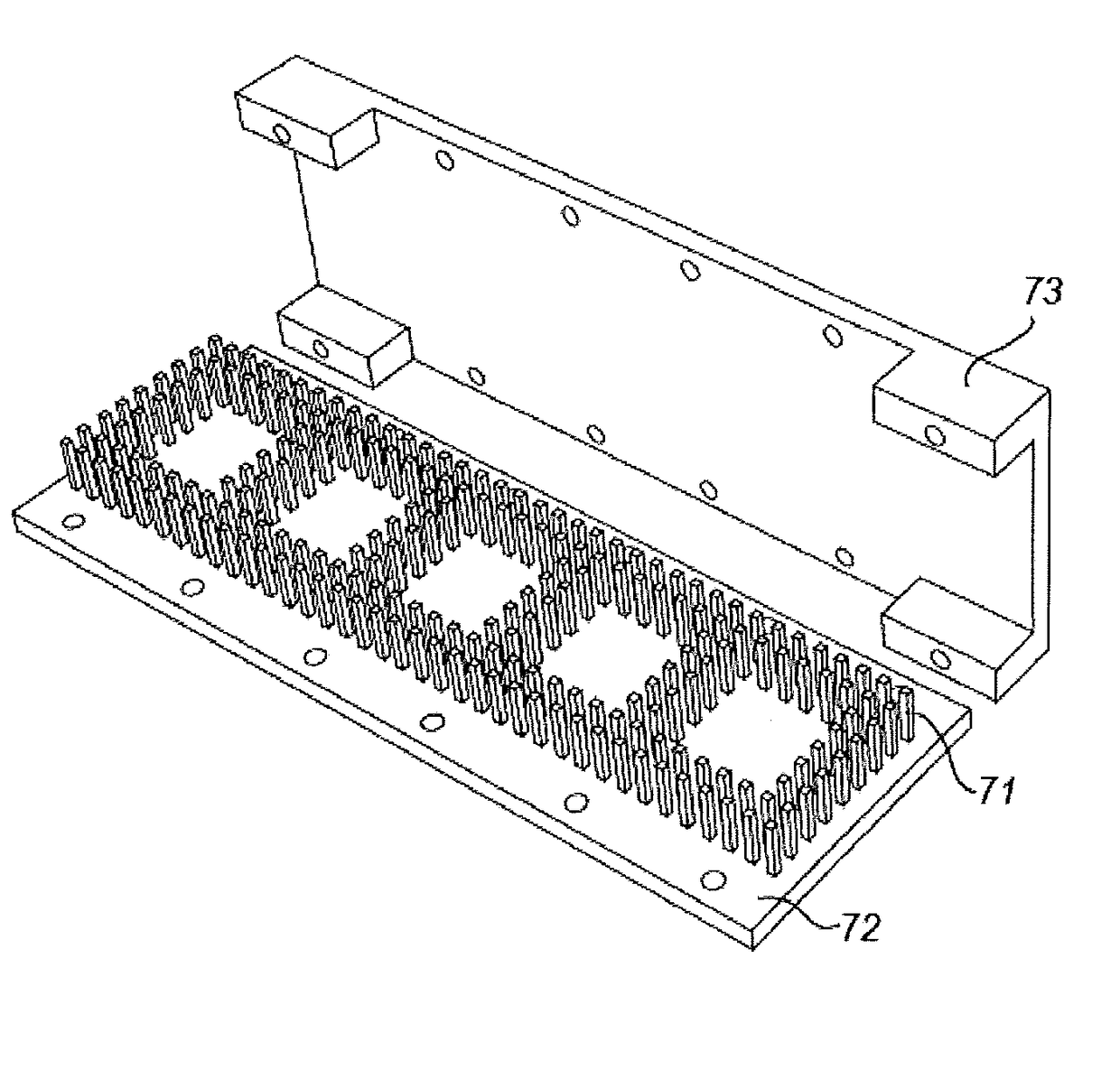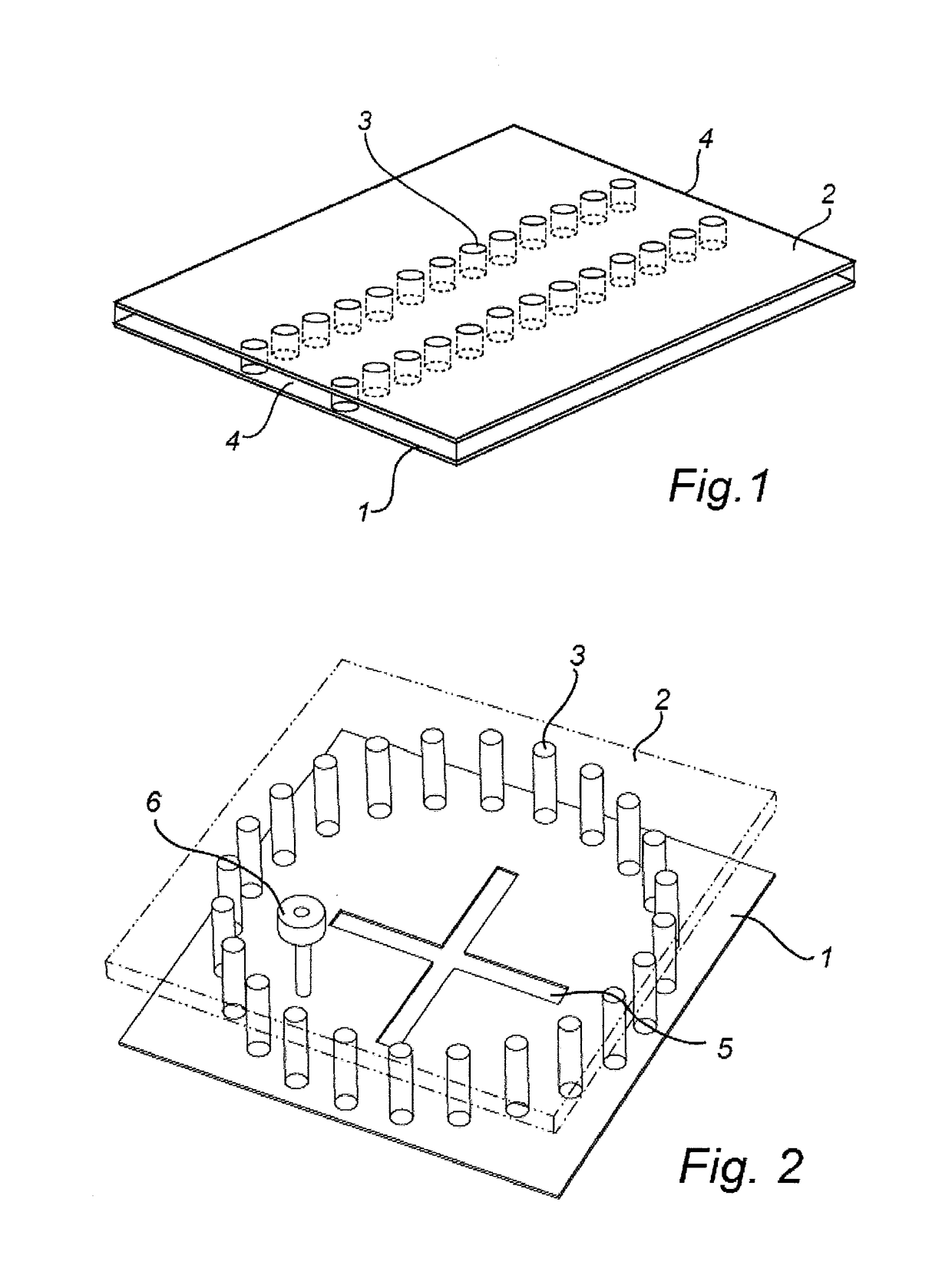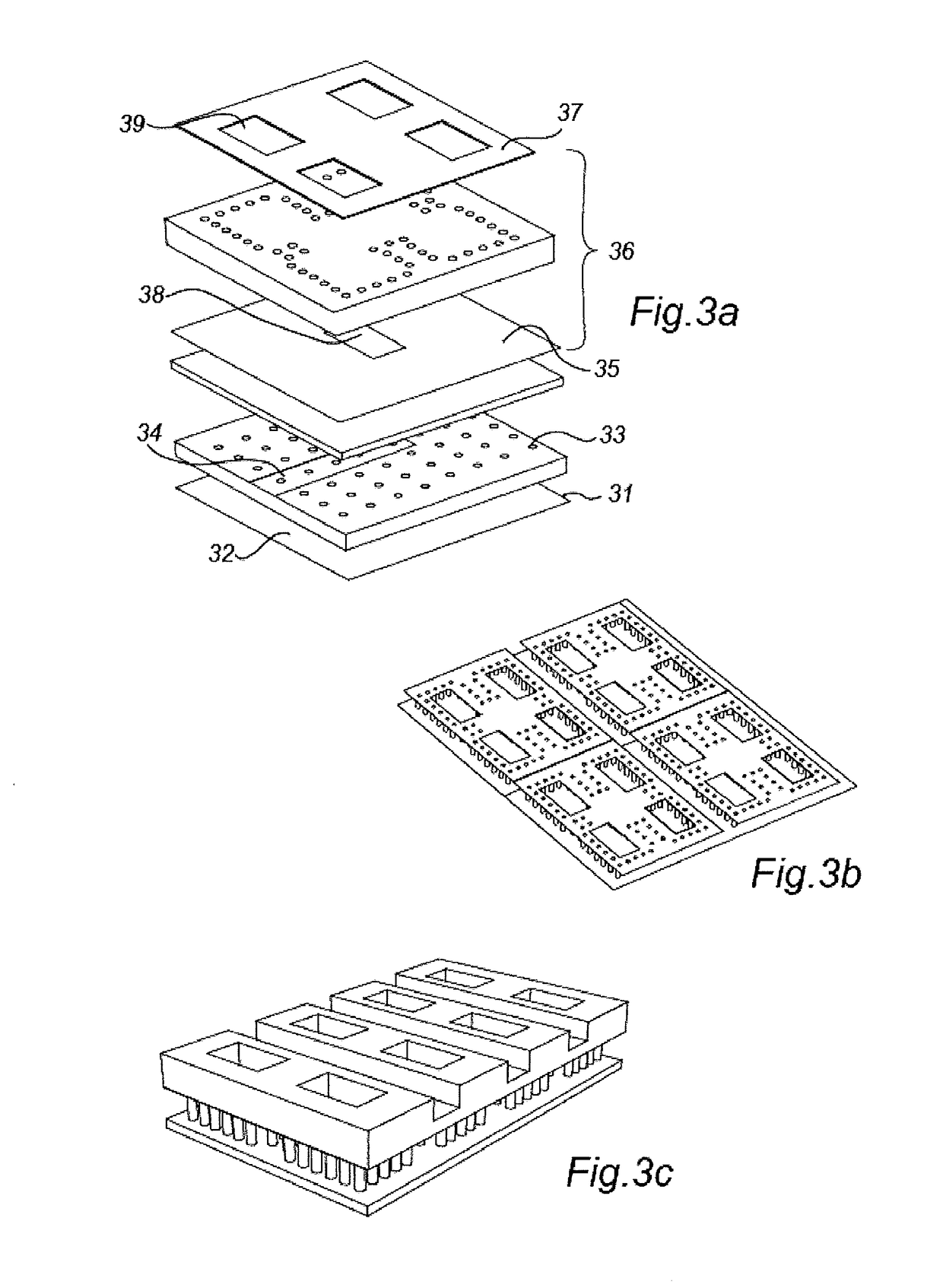Waveguides and transmission lines in gaps between parallel conducting surfaces
a technology of transmission lines and parallel conducting surfaces, applied in waveguide type devices, parallel-plate/lens fed arrays, feeding systems of parts, etc., can solve the problems of large losses of dielectric and conductive parts of microstrip networks, conductive losses are very high due to the miniaturization, and microstrip lines cannot be made wider, etc., to achieve cost-effective production and good performan
- Summary
- Abstract
- Description
- Claims
- Application Information
AI Technical Summary
Benefits of technology
Problems solved by technology
Method used
Image
Examples
Embodiment Construction
[0173]In the following detailed description, preferred embodiments of the present invention will be described. However, it is to be understood that features of the different embodiments are exchangeable between the embodiments and may be combined in different ways, unless anything else is specifically indicated. Even though in the following description, numerous specific details are set forth to provide a more thorough understanding of the present invention, it will be apparent to one skilled in the art that the present invention may be practiced without these specific details. In other instances, well-known constructions or functions are not described in detail, so as not to obscure the present invention.
[0174]In a first embodiment, as illustrated in FIG. 1, an example of a rectangular waveguide is illustrated. The waveguide comprises a first conducting layer 1, and a second conducting layer 2 (here made semi-transparent, for increased visibility). The conducting layers are arrange...
PUM
 Login to View More
Login to View More Abstract
Description
Claims
Application Information
 Login to View More
Login to View More - R&D
- Intellectual Property
- Life Sciences
- Materials
- Tech Scout
- Unparalleled Data Quality
- Higher Quality Content
- 60% Fewer Hallucinations
Browse by: Latest US Patents, China's latest patents, Technical Efficacy Thesaurus, Application Domain, Technology Topic, Popular Technical Reports.
© 2025 PatSnap. All rights reserved.Legal|Privacy policy|Modern Slavery Act Transparency Statement|Sitemap|About US| Contact US: help@patsnap.com



